Sechelt, BC V0N 3A0
Canada

|
#201 - 5760 Teredo St
Sechelt, BC V0N 3A0 Canada |

|
|
Black Ball Ferries 1951-1961
SECHELT, BC — August 11, 2011 — Local real estate agent Gary Little has written the following article relating to the history of Black Ball Ferries in British Columbia with a focus on the Horseshoe Bay - Sunshine Coast route. An edited version of this article appeared in The Local on August 11, 2011. This article inspired Leacock Medal-winner Howard White, O.C. of Harbour Publishing to write a column titled History vs. Hotdogs in the Fall 2011 issue of Coast Life. August 11 is the 60th anniversary of the "opening of a new era in Peninsula History" and the "kiss of awakening for the sleeping beauty that is the Sechelt Peninsula" as The Coast News editorialized in 1951. The landmark event triggering these lofty statements was the arrival of the first drive on-drive off car ferry service to the Sunshine Coast. It was provided by a private maritime transportation company called Black Ball Ferries.
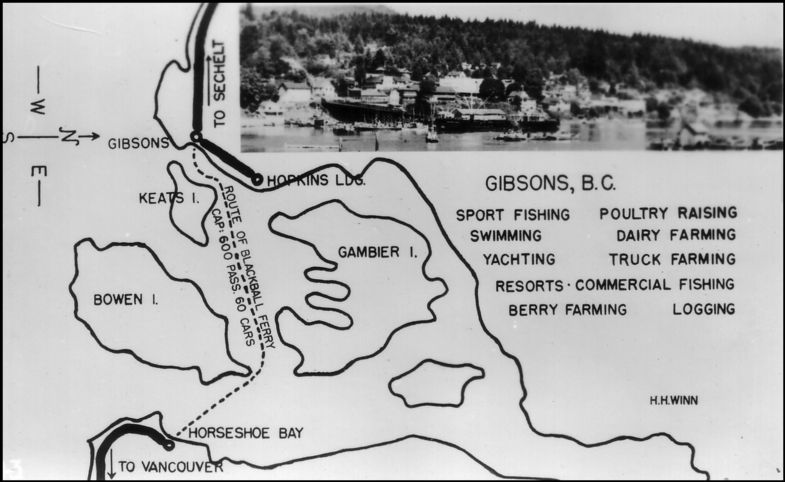
The Black Ball ferry route between Horseshoe Bay and Gibsons Landing. Capt. Alex Peabody, Chairman of the Board of Puget Sound Navigation, wanted a new challenge and he didn't have to go too far to find one. Car ferry service in British Columbia at the time was being poorly managed by Canadian Pacific Steamships whose Princess Line provided inefficient, infrequent, and inconvenient service from downtown Vancouver to Nanaimo and to Victoria (with onward service to Seattle). The Sunshine Coast was accessible only by small passenger boats, such as Commuter and Machigonne, and larger Union Steamship vessels which could handle cars only as cargo.

Two different commercial passenger boats used in the late 1940s before the arrival of Black Ball Ferries: M.V. Commuter and Machigonne To avoid head-to-head competition with Canadian Pacific as it launched its B.C. venture, Black Ball focused first on developing a route between Horseshoe Bay and the Sunshine Coast. This required an initial capital expenditure of about $500,000 to pay for two terminals and ferry upgrades. The ferry chosen was the 25-year-old Quillayute which could handle 48 cars and 600 passengers. There were initially five sailings per day in each direction, one every three hours. The fare was $3/car (each way) and $1/passenger (each way). Black Ball did not change these fares for 10 years!
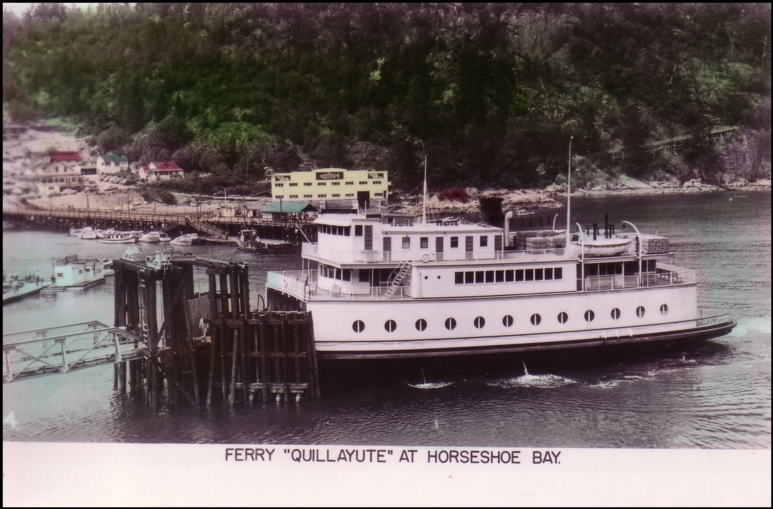
Quillayute: the first automobile ferry to serve the Sunshine Coast. Black Ball pulled out all the stops to ensure that August 11, 1951 would be a memorable day. Streamers and flags adorned the streets of Gibsons, an RCMP honour guard was on hand to greet the Quillayute upon its arrival from Horseshoe Bay, school children sang O Canada, and no less than three bands provided musical entertainment. A ceremonial ribbon was cut by Chuck Winegarden, an early pioneer who had rubbed elbows with George Gibson himself.
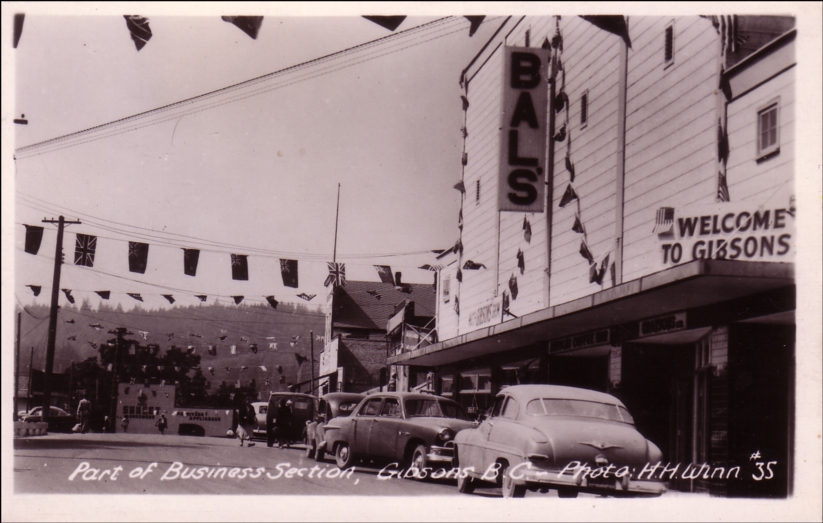
Gibsons Landing all decked out to welcome the arrival of the first Black Ball ferry in 1951.

Bainbridge: the second automobile ferry to serve the Sunshine Coast.

Langdale Queen: formerly the Asbury Park (1903, on left), the City of Sacramento (1925), and the Kahloke (1953, on right). Black Ball now had three new routes but only four ferries to handle them. They were in desperate need of a relief ferry to prevent disruption of service in the event of breakdown. In late 1955 they acquired Scotian, a former Halifax-Dartmouth harbour ferry, renamed her Smokwa (which means "crane" in a Salish dialect), and put her into service on the Gibsons route on May 2, 1956. Smokwa was the first ferry to arrive at the new Langdale terminal in 1957.

Smokwa: the third automobile ferry to serve the Sunshine Coast. Formerly the Scotian. Premier Bennett apparently had more than a single route to the Victoria area on his wish list. Much like the governor of Washington State 10 years earlier, he wanted to usurp virtually all of Black Ball's assets, including its fleet of five ferries and its terminals. The B.C. government soon made a deal to acquire Black Ball assets and on November 30, 1961 Cabinet approved the purchase for $6,690,000. In the end, ferry service to the Sunshine Coast under the Black Ball name lasted just a bit over 10 years. Later this year we will be marking 50 years of B.C. Ferries service to Langdale.
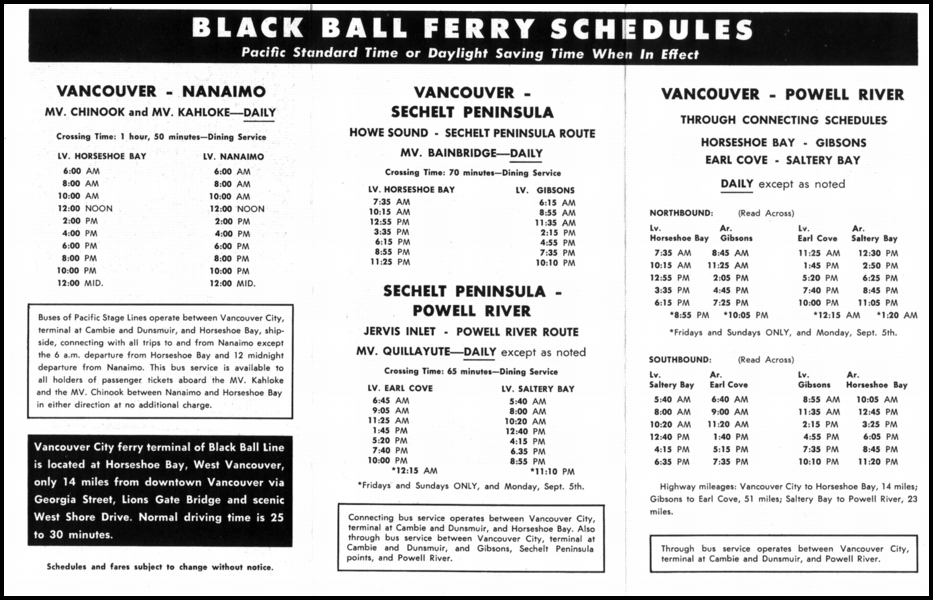
Black Ball Ferry Schedules (Summer 1955). 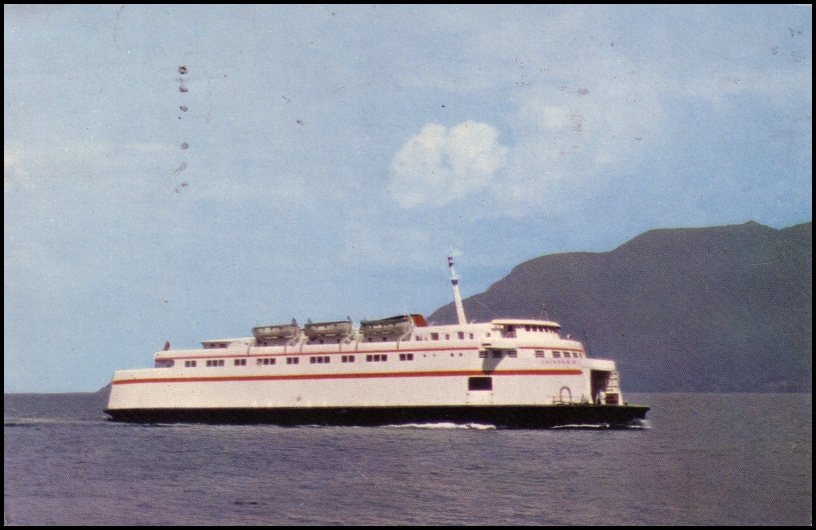
Chinook II was added to the Horseshoe Bay - Departure Bay route in 1955. She was built by Black Ball in 1947 for service on the Port Angeles - Victoria route. 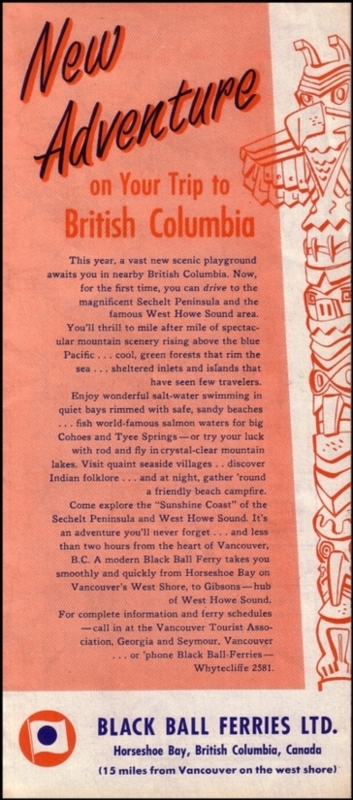
Black Ball announces ferry service to the Sunshine Coast. 1951. 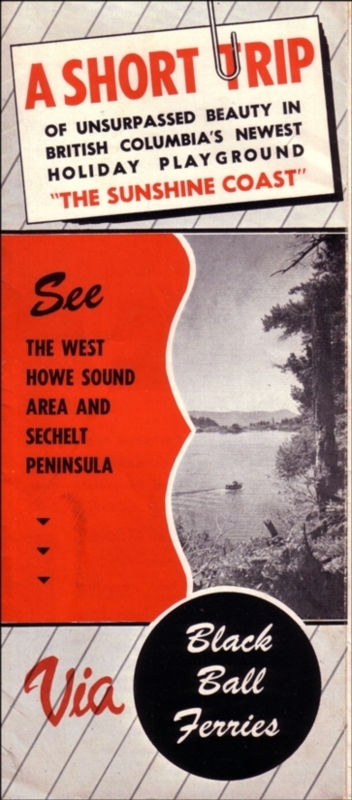
An early Black Ball Ferries brochure. Circa 1952. 
Black Ball Ferries brochure. 1954. 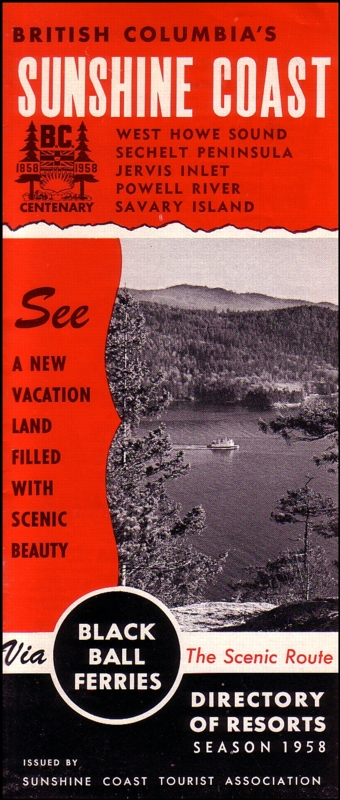
Sunshine Coast Directory of Resorts 1958. 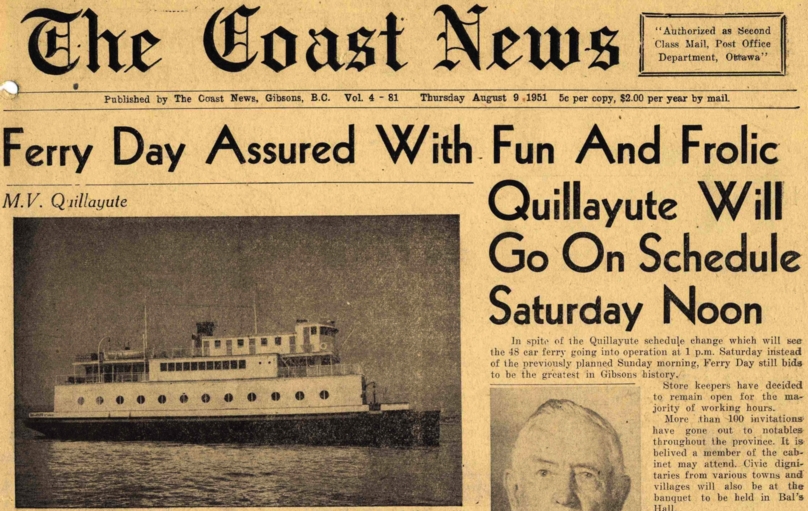
Excitement mounts in the days prior to the arrival of the first car ferry to the Sunshine Coast. (Courtesy of Sunshine Coast Museum & Archives) 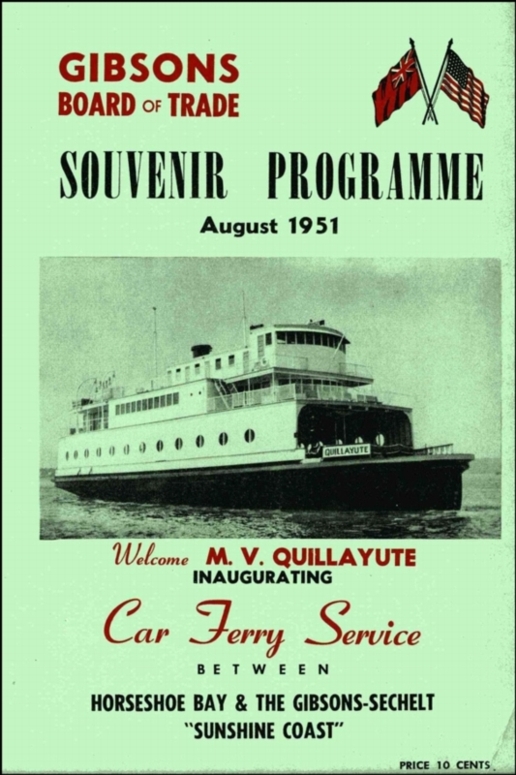
The cover of the Souvenir Programme for the inauguration of Car Ferry Service Between Horseshoe Bay & The Gibsons-Sechelt "Sunshine Coast". (Courtesy of Sunshine Coast Museum & Archives) 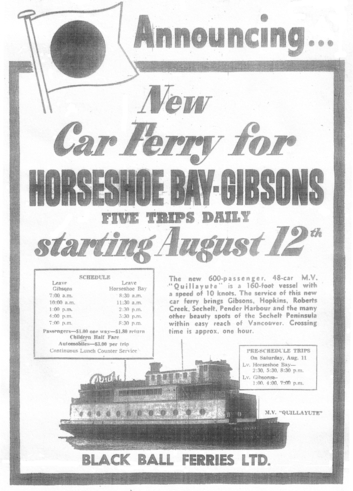
Advertisement for the opening day of regular car ferry service to Gibsons in 1951. Service actually began a day earlier, on August 11. (Courtesy of West Vancouver Public Library) 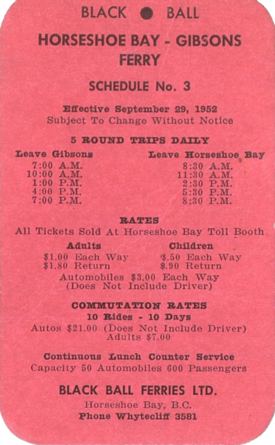
Horseshoe Bay - Gibsons ferry schedule 1952. (Courtesy of Sechelt Community Archives) 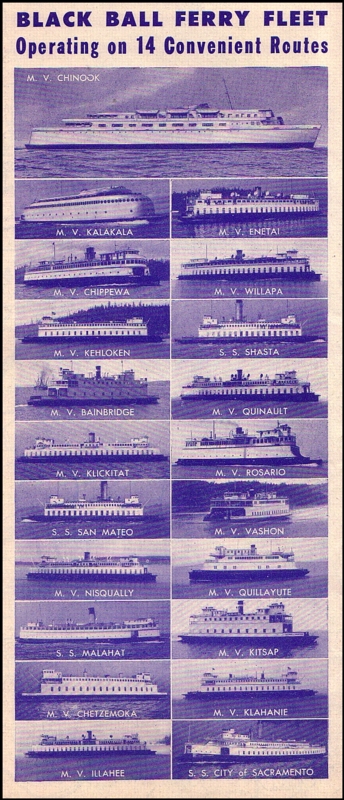
Black Ball's Washington State ferry fleet in 1950. Most of these ferries were acquired by the state government in 1951 leaving Black Ball with only five for use in its British Columbia operations: Chinook, Bainbridge, Quillayute, City of Sacramento, and Malahat. 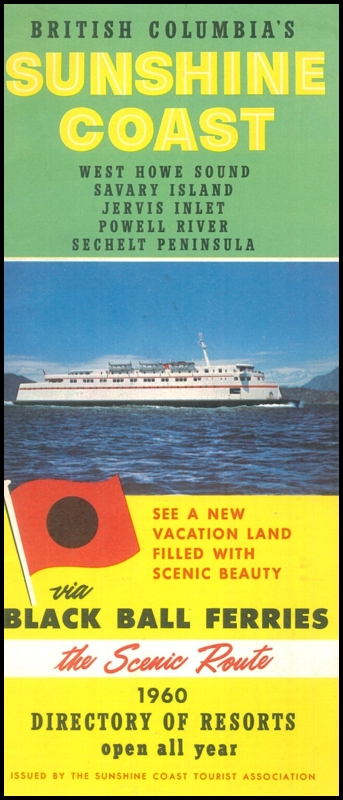
Sunshine Coast Directory of Resorts 1960. Unless otherwise indicated, all pictured items are from the collection of Gary Little. Gary Little is an innovative real estate agent in the offices of Royal LePage Sussex in Sechelt, British Columbia. He is well known for his use of technology to provide compelling real estate tools for the general public, notably his interactive real estate map of the Sunshine Coast (first published in 2006), his real estate statistics service, and his real estate services for mobile phone users. You can contact him through www.GaryLittle.ca.
This news release is located online at: http://www.GaryLittle.ca/history/blackball.html |